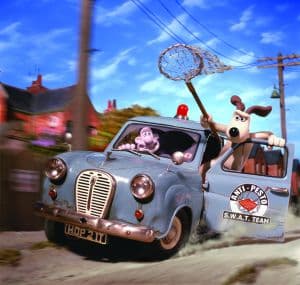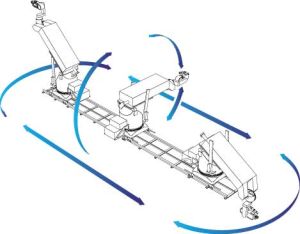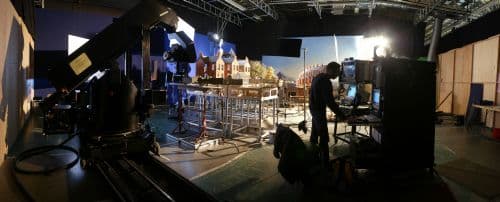Aardman Animates Another Hit!
Aardman Animates Another Hit!

The cheese-loving Wallace and his ever faithful dog Gromit—the much-loved duo from Aardman’s Oscar®-winning clay-animated “Wallace & Gromit” shorts—star in an all new comedy adventure, ‘Wallace & Gromit – The Curse of the Were-Rabbit’.
The acclaimed latest feature from the award winning team was shot extensively with motion control equipment (twenty eight out of the thirty five units were motion control units). Aardman used three of their Milo Motion control rigs and eight steppers units supplied by us here at Mark Roberts Motion Control!
Aardman’s style of shooting makes good use of motion control, giving wonderful intricate camera moves along side their distinctive style of clay animation. In particular the Milo Motion Control camera was heavily relied upon. “The shooting schedules were entirely worked out around the availability of the Milos because of the flexibility and range that they possess” says Tom Barnes, Aardman Features Head of cameras. “The other motion control equipment is just not capable of moves of such complexity”. The Milo possesses a working envelope from 4 metres high at lens height to 0.75 metres below ground level. “This meant that the Milo gave more freedom in 3D space as a move could be executed from 6ft above the set vertically down to 3 ft above without any rigging obstructing its path or the need to re-rig in the event of a move change”
Motion control was born in particular from basic stop frame animation. An inanimate object is made to appear animated by slightly moving it in small increments for each frame of photography using the conventional animation technique . Once the animator has moved the object, one frame of film is then exposed. When the film runs continuously for more than 15 frames per second, the illusion of continuous movement is created and the objects appears to move by themselves. This is similar to the animation of cartoons, but used by Aardman with clay models instead of drawings. One feature of Motion control means that you can preview the entire intricate animation move prior to filming. The 3 dimensional move is entered into a software program, in this case Mark Roberts Motion Control’s Academy Award winning Flair, which controls the motion control rig. It is then run and viewed in its entirety by the director, then shot frame by frame the animator.

While stop-motion appears to be a fantastic way to bring vivid realism to animated objects, it has one drawback. When you film an object, person or animal with a moving camera at the conventional 24 frames per second, each frame of film from that sequence will contain motion blur. Motion blur occurs with stills photography when the camera is moving or the subject is moving. There is some blurring of moving objects or backgrounds. But in traditional stop motion cinematography, neither the object being animated nor the camera is moving when each frame of film is exposed. The animator is moving the object in between frames. Therefore, the animated object has no motion blur giving it a slightly “jerky” motion instead of smooth movement.To remedy this lack of motion blur in stop motion animation, “go-motion” (also known as “moving-step”) was created. Normally different parts of the model miniature being animated were hooked up to a computer to create a slight movement when the camera was exposing a frame of film, producing a motion blur. This alleviated the “jerky” motion, creating believable lifelike creatures. Now however one of the many features within Flair gives you ‘motion blur animation’ where every frame is exposed while the camera is moving as if the move were being shot continuously. The motion control rig ‘backs up’ then moves, shooting the single frame. Not only can single framing can be done forwards or backwards, you can put in an automatic delay after each step, specify the number of camera exposure frames with each step, and the number of move frames to progress with each step.

One of Aardman’s Milos on the set of ‘The Curse of the Were-Rabbit’
